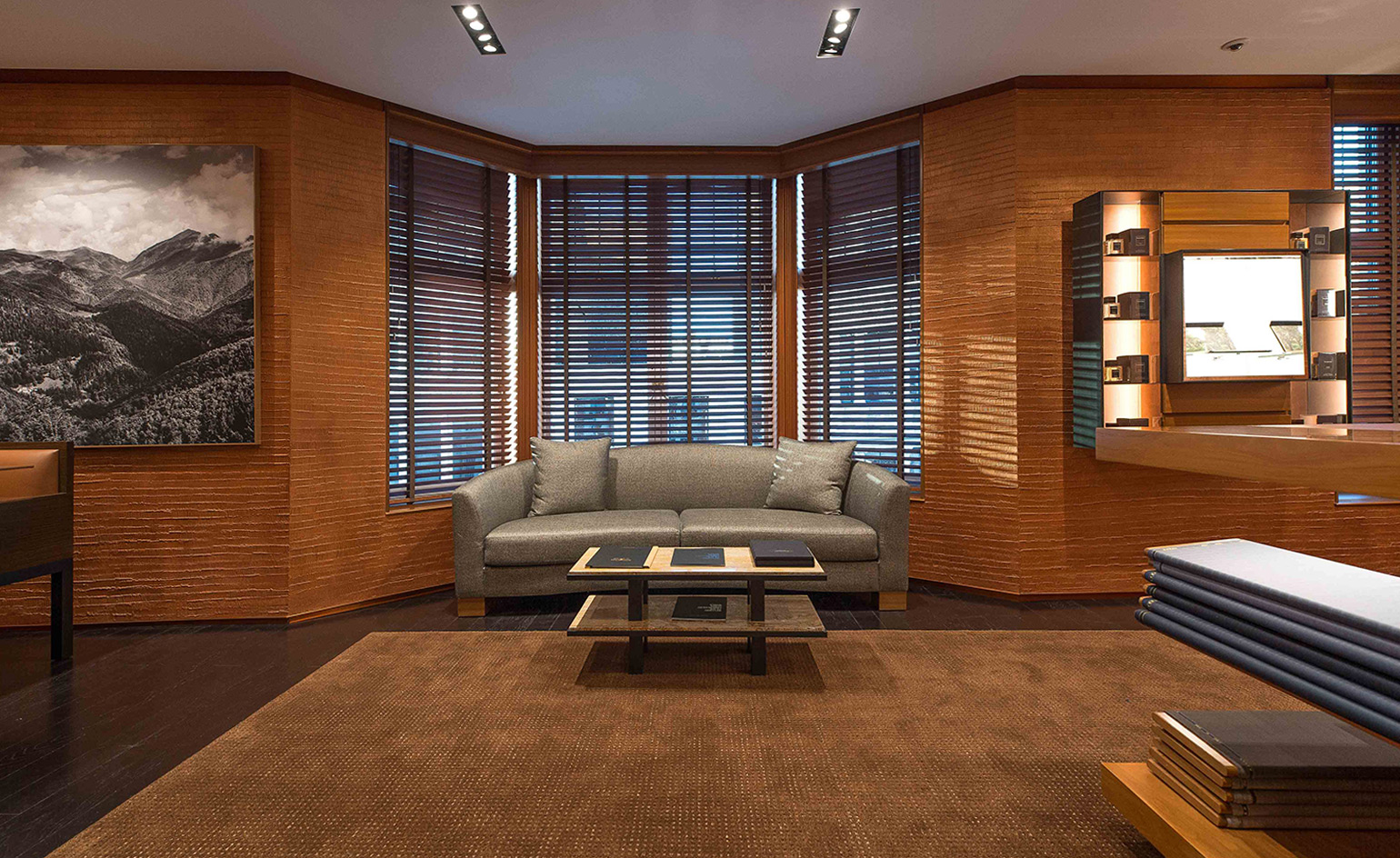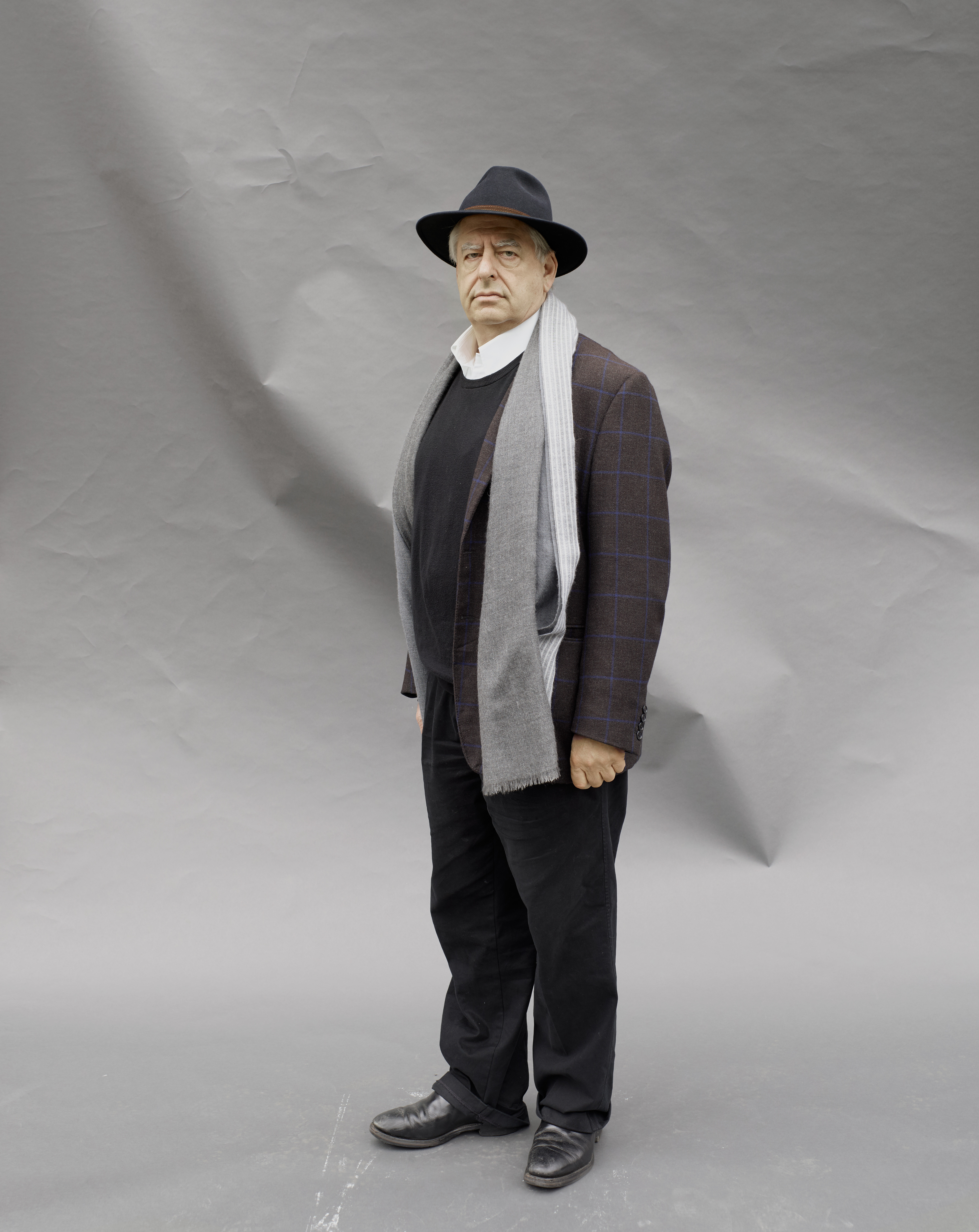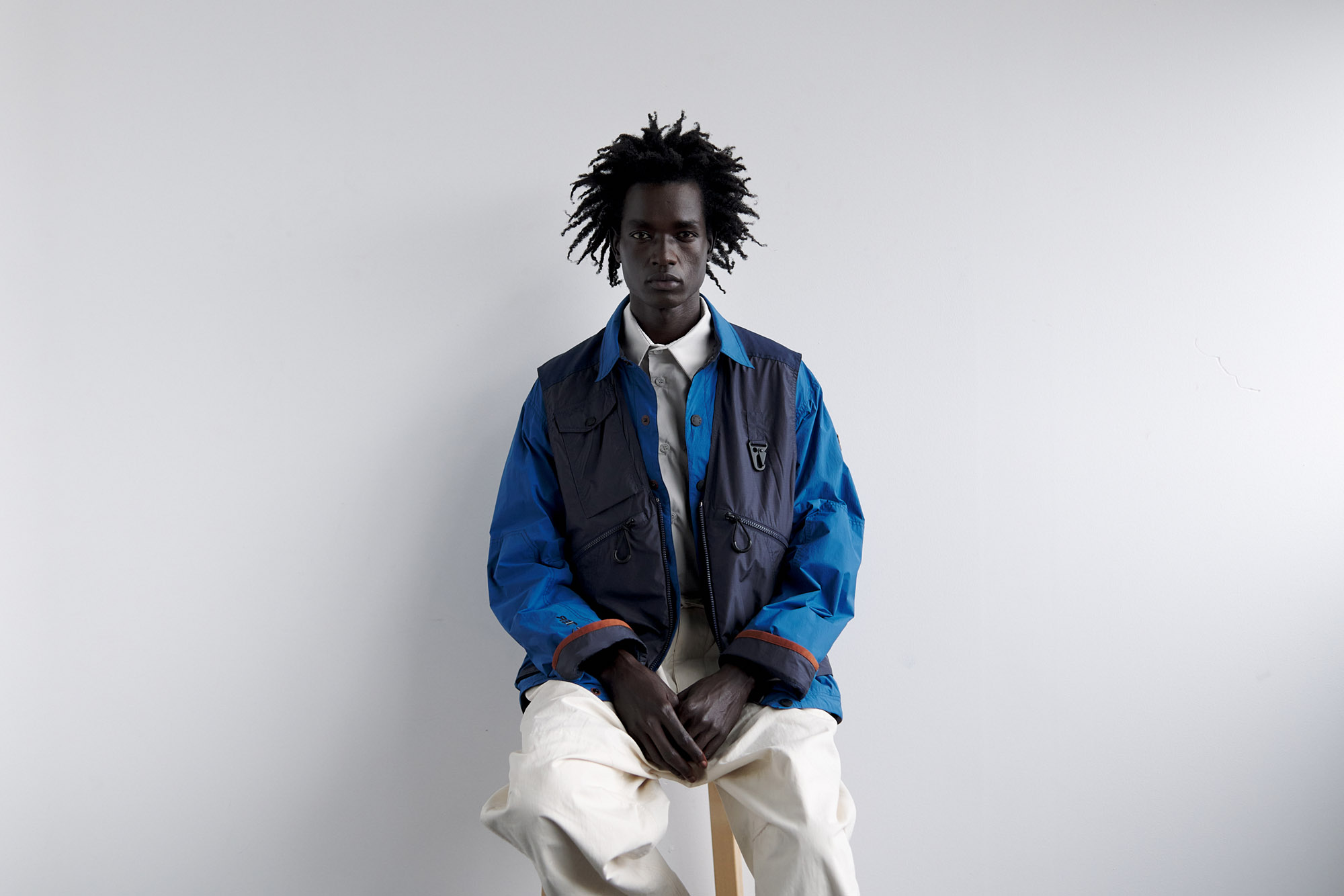On the map: artist William Kentridge’s tapestry for Ermenegildo Zegna’s London store

All through history, people have woven tapestries to tell stories. A new one by South African artist William Kentridge, hanging in the Ermenegildo Zegna store on New Bond Street in London, tells several interconnected tales, including that of the visionary Italian entrepreneur Ermenegildo Zegna, who took his father’s looms and built a wool mill in Trivero, in the Alpine foothills, in 1910.
Today, the fourth generation of Zegnas carry on the story of this family-run company. When they planned a new shop for London, Ermenegildo’s granddaughter, Anna Zegna, sought out Kentridge to create a tapestry for the company’s Art in Global Stores series. ‘There are so many connections between what we do – our work, passion, tradition and heritage – and how he treats materials is the same,’ says Zegna. ‘We needed to connect the dots in weaving this history of ours into a tapestry that could be a sort of film, connecting the bits and pieces.’
Although unfamiliar with the Zegna brand prior to this commission, Kentridge did own something by it. ‘By chance I looked inside a jacket I’d bought several years ago and discovered that it was from that shop,’ he says. He has also produced a great deal of artwork in Italy, including mosaics for a metro station in Naples, a frieze on the banks of the River Tiber, and work for the staging of The Magic Flute at La Scala in Milan.

In London, Kentridge's tapestry is installed at Ermenegildo Zegna's Bond Street store, which was itself
Kentridge works in a wide range of media and has created more than 40 tapestries in the past decade or two. Many of them show shadowy images of people against a backdrop of maps, what he calls ‘a sense of people moving across the world’. To help feed his imagination, Zegna sent the artist archival documents and images of the company: photos of the wool mill and of Ermenegildo, ledger accounts, and cardboard patterns.
The resulting tapestry is titled Dare/Avere, Italian for the debit and credit columns in accounting ledgers. Four figures, three men and a woman, are portrayed in silhouette against a map of northern Italy. They are, Kentridge says, ‘somewhere between human figures and a man who is simply a suit’.
When Zegna looks at the tapestry, she sees ‘my grandfather, who was going around the world to bring Zegna fabric to sell’. One figure appears to be carrying a newspaper. One wears a hat, while another has a Zegna label stuck to his lapel and an old sewing machine instead of a head. The sewing machine is Italian, Kentridge points out.

Detail of Kentridge's tapestry. Courtesy of Galleria Lia Rumma, Stephens Tapestry studio; and Emenegildo Zegna
‘In the 1960s, when I was a child, Italy existed in South Africa in the form of motor cars, scooters, typewriters and sewing machines –the Necchi sewing machine my mother had.’ Anna Zegna recognises the machine as the same kind her grandmother used.
Behind the figures’ heads appear pale yellow and green patterns used to make suits, and a ledger page from 1944, complete with a woven image of Ermenegildo Zegna’s own handwriting. It was a key year for Ermenegildo Zegna, who lacked the funds to buy raw materials due to the war and whose business was rescued by a Swedish purveyor who appreciated the beauty of his fabrics.
This tapestry is also a story about fine wools and the anonymous craftspeople who spin, dye and weave them. Kentridge says one of the many reasons he is drawn to tapestries is because they are pixelated images ‘made up of thousands of decisions at each place where the warp meets the weft’. First-rate weavers have ‘the dexterity of harp players and must make the decisions more like a musician as to the exact moment of transition from one line to another, of how a very fine detail gets rendered in the less exact form of the tapestry.’

The Zegna store is a departure for Marino, who utilised polished rosewood with a rusticated design, cerused ashwood in ivory and three-dimensional plaster, alongside Afra and Tobia Scarpa armchairs and a sofa
For decades he has collaborated with the Stephens Tapestry Studio, founded in 1949 in Northern Swaziland by Coral Stephens and now run by her daughter Marguerite. For this work, he gave Marguerite a small collage, which she blew up photographically before annotating it and laying it behind warp threads on big Gobelins-style upright looms. She says it was a particularly complicated piece, requiring five weavers to work for two and a half months. In fact, she asked Anna Zegna for permission to make it bigger than the originally agreed-upon size to accommodate the tiny mountain symbols (each with shadows) and the names of Italian towns. Knowing full well the complexity of weaving techniques, she agreed.
The weft is made of mohair handspun in Swaziland. The edges are woven in the palest natural grey of Lesotho goats, the only kind that produce this particular shade. The sections representing suit patterns are woven from a fine Mohair Trophy goat, the winner of an annual competition that Ermenegildo Zegna conducts in South Africa, and that the company uses for its suits. Stephens says this thread comes from goats that are specially raised and handwashed. Touch this section and you’ll feel that it’s softer than the rest.
Now that the tapestry is hanging on the third floor of the Zegna store, on the one wall large enough for it to be properly admired, Kentridge is keen to see how it occupies its place in the shop and in the company’s ongoing story. ‘I’m interested to see how the tapestry earns its keep,’ he says. ‘How it feels in the space. The men in suits on the tapestry, and the men in suits on the shop floor.'
As originally featured in the December 2016 issue of Wallpaper* (W*213)

photographed at 3 Mills Studios, east London

Anna Zegna, president of the Zegna Foundation, at the Milan HQ of Ermenegildo Zegna.

Detail of the tapestry. Courtesy of Galleria Lia Rumma, Stephens Tapestry studio; and Emenegildo Zegna
INFORMATION
For more information, please visit the ZegnArt website
ADDRESS
Wallpaper* Newsletter
Receive our daily digest of inspiration, escapism and design stories from around the world direct to your inbox.
37-38 New Bond Street
London W1S
-
 Kapwani Kiwanga transforms Kvadrat’s Milan showroom with a prismatic textile made from ocean waste
Kapwani Kiwanga transforms Kvadrat’s Milan showroom with a prismatic textile made from ocean wasteThe Canada-born artist draws on iridescence in nature to create a dual-toned textile made from ocean-bound plastic
By Ali Morris
-
 This new Vondom outdoor furniture is a breath of fresh air
This new Vondom outdoor furniture is a breath of fresh airDesigned by architect Jean-Marie Massaud, the ‘Pasadena’ collection takes elegance and comfort outdoors
By Simon Mills
-
 Eight designers to know from Rossana Orlandi Gallery’s Milan Design Week 2025 exhibition
Eight designers to know from Rossana Orlandi Gallery’s Milan Design Week 2025 exhibitionWallpaper’s highlights from the mega-exhibition at Rossana Orlandi Gallery include some of the most compelling names in design today
By Anna Solomon
-
 Revisiting the showstopping runway sets of men’s fashion week
Revisiting the showstopping runway sets of men’s fashion weekAs Men’s Fashion Week S/S 2025 draws to a close, Wallpaper* picks the season’s most transporting runway sets, from giant cats at Dior Men to a ‘fairytale ravescape’ at Prada
By Jack Moss
-
 Utilitarian men’s fashion that will elevate your everyday
Utilitarian men’s fashion that will elevate your everydayFrom Prada to Margaret Howell, utilitarian and workwear-inspired men’s fashion gets an upgrade for S/S 2024
By Jack Moss
-
 The best fashion moments at Milan Design Week 2024
The best fashion moments at Milan Design Week 2024Scarlett Conlon discovers the moments fashion met design at Salone del Mobile and Milan Design Week 2024, as Loewe, Hermès, Bottega Veneta, Prada and more staged intriguing presentations and launches across the city
By Scarlett Conlon
-
 Men’s Fashion Week S/S 2025: what to expect
Men’s Fashion Week S/S 2025: what to expectBeginning this weekend, everything we know about Men‘s Fashion Week S/S 2025 so far, from Dries Van Noten’s final show in Paris to an intimate Craig Green presentation in London
By Jack Moss
-
 Zegna’s innovation-filled ‘Secondskin’ sneaker began with a pair of leather gloves
Zegna’s innovation-filled ‘Secondskin’ sneaker began with a pair of leather glovesZegna’s ‘Triple Stitch Secondskin’ sneaker sees the Italian house experiment with glove leather for a lightweight shoe, designed to mould to the contours of the foot
By Tianna Williams
-
 Colourful cashmere to brighten even the greyest of winter days
Colourful cashmere to brighten even the greyest of winter daysElevate your mood – and your wardrobe – with our pick of colourful cashmere sweaters, scarves, hats and more, perfect gifts for men and women
By Jack Moss
-
 Private view: autumn fashion on display at David Zwirner gallery
Private view: autumn fashion on display at David Zwirner galleryPhotographer Dham Srifuengfung captures the best autumn fashion on a cast of cultural characters in a London art gallery, as seen in the November Art Issue of Wallpaper*
By Jack Moss
-
 Zegna x The Elder Statesman launches with Los Angeles pop-up in a Jean Prouvé-designed structure
Zegna x The Elder Statesman launches with Los Angeles pop-up in a Jean Prouvé-designed structureZegna x The Elder Statesman arrives worldwide this month, including a special stop in Los Angeles. Here, Alessandro Sartori and Greg Chait tell Wallpaper* the story behind the collaboration
By Pei-Ru Keh